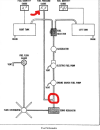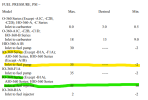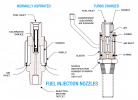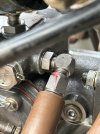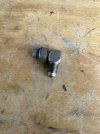- Joined
- Jul 17, 2019
- Messages
- 1,933
- Location
- Chicago suburbs
- Display Name
Display name:
The Little Arrow That Could
Over the last couple months my arrow's fuel pressure gauge has been on the fritz. For a while it was jumpy -- oscillating wildly in the green back and forth like a metronome. Then it would read near 0 after start-up and during taxi, but then come up and stabilize in the green during run up. Now the gauge bounces around a little bit and sometimes reports low. FWIW, the fuel flow dial on the manifold pressure gauge doesn't jump around at all -- and engine performance is perfectly fine.
The shop I brought it to for annual said the gauge is probably fine and we need to replace the engine driven fuel pump. They suggested a check-valve in the fuel pump could be getting stuck closed/open resulting in actual sporadic fuel pressure. The fuel pumps aren't that expensive and I'm all about critical components being top-notch, but I also don't want to replace it if that's not the culprit and I'm still stuck with an unreliable gauge afterwards. Any troubleshooting suggestions or people who have experienced similar issues?
The shop I brought it to for annual said the gauge is probably fine and we need to replace the engine driven fuel pump. They suggested a check-valve in the fuel pump could be getting stuck closed/open resulting in actual sporadic fuel pressure. The fuel pumps aren't that expensive and I'm all about critical components being top-notch, but I also don't want to replace it if that's not the culprit and I'm still stuck with an unreliable gauge afterwards. Any troubleshooting suggestions or people who have experienced similar issues?




